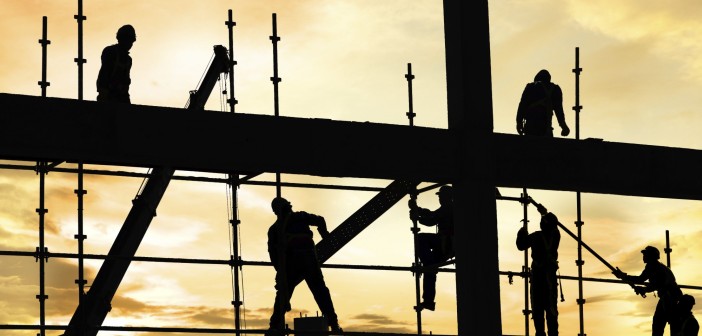Construction sites are inherently hazardous environments. Heavy machinery, potentially unstable structures, large drops, power tools, fire hazards, and more all add up to create a place that is prone to accident or even disaster. Ensuring safety on a construction site is essential for the smooth operation of the project, and the well-being, morale, and effectiveness of the work force. Here are some steps that project managers and construction personnel take to ensure a safe working environment.
The first thing construction managers need to know is what it’s like on the ground. Perform a thorough walkthrough of the site, making note of any potential hazards or unsafe conditions. This can be made more effective through practices like building information modeling, which involves the use of software to visualize the construction site, but even a simple walking inspection of the site can save lives and money. Identify and mark any hazardous materials on the way, determining risk to personnel. Continuing on with inspections, makes sure that all tools and machinery are inspected regularly. The last thing that needs to happen is a critical failure of some massive piece of equipment, or even a simple handheld tool: these powerful tools can result in severe damages, bodily harm, and death if used improperly or left unmaintained.
Knowledge is power. Making sure that every employee is aware of and practicing standard safety procedures is critical. This includes the wearing of protective equipment such as safety goggles and helmets (which should be provided), and the occasional practice of emergency procedures and drills for cases like mechanical failures or injuries.
Work areas are kept free of crowds. According to L & H Construction Inc., “Large groups of people congregating where they do not need to be on a site represent a significant risk, particularly near to machinery, drops, electrical equipment, and other hazardous materials. There is no need to create exposure to injury where it doesn’t need to exist, so make sure that there are standard procedures for approaching hazardous situations (and avoiding them altogether).” One example is the filling of holes with backhoes. People love to watch the dirt pour in while standing on the edge, but there is no practical reason for them to be there and many reasons why they shouldn’t.
Good fire prevention principles are always practiced. There is always the possibility of a fire on a construction site, so take all the necessary steps to minimize the risk. Keep open flames away from combustible materials. Do not store combustible materials in improper areas. Make sure that in the event of a fire, all personnel know the escapes and exits, and that everybody is trained in the use of a fire extinguisher (especially when and when not to use them).
Backing up anything is a dangerous activity. When machinery is moving backward, the operator cannot trust in the backup alarms, they need to be absolutely sure that their path is clear. This is done by getting out and looking, and using spotters for blind spots. Construction sites are often loud and busy, so make sure that no assumptions are made by drivers about what they’re backing into.
Loads that need to be moved are always balanced and secured properly. Improper rigging attachments are highly dangerous and can result in significant damages and harm. Use oversized fittings for large loads, inspect straps, cables, latches, and hooks, and keep personnel clear of the load.
Construction sites are hazardous places, and all personnel need to be careful at all times. Modern equipment is the safest and most reliable ever made, but equipment is only as safe as the users who are controlling it. Construction managers make sure that all personnel are in a constant safety-forward mindset to ensure construction site safety.




